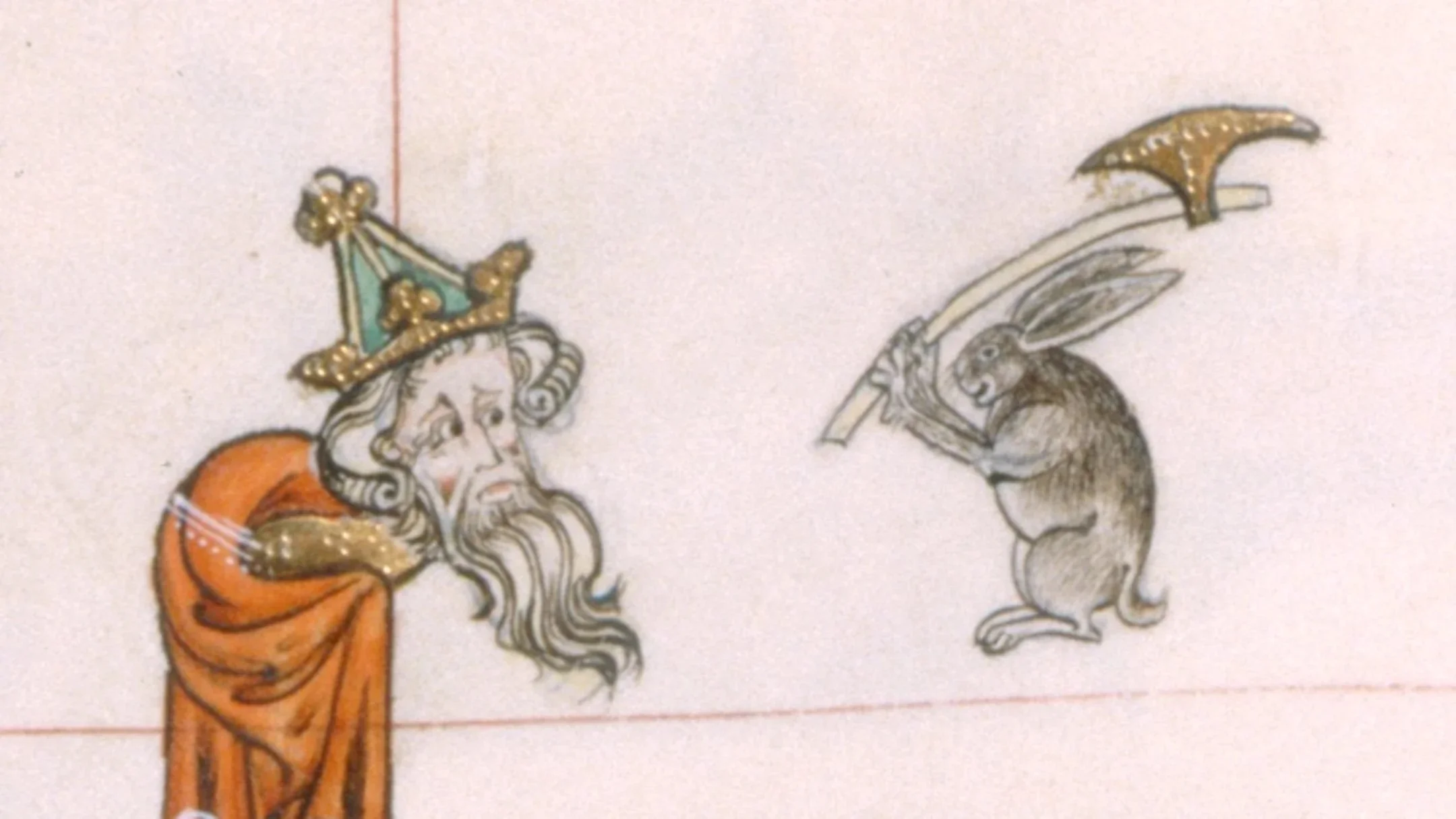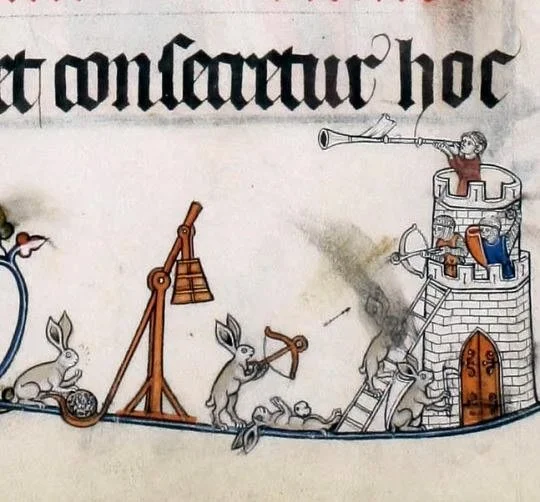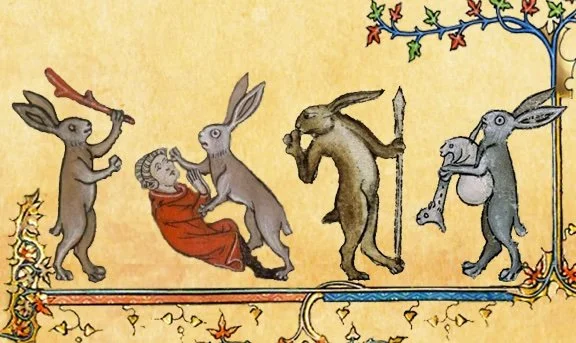Rabbit rules• for Jacob
It might sound a little off, but these armed bunnies show up all over medieval manuscripts, often hidden in the margins.
I did this tattoo at Visions of Ecstasy Studio in Berlin for my dear friend Jacob from Leipzig—he’s actually the one who first brought this strange bit of medieval imagery to my attention.
It might sound a little wild, but these armed bunnies show up all over medieval manuscripts, often hidden in the margins. Tiny, chaotic scenes where rabbits chase knights, swing swords, or even hunt people with dogs. It’s bizarre, playful—and somehow still feels powerful.
No one really knows what they were meant to represent, and that mystery is exactly what I love. Some think they were a kind of medieval joke—turning the world upside down, making the prey into the predator. Others see them as satire, mocking fear or flipping social roles. And sometimes they’re just nonsense—doodles, jokes, maybe even a quiet little rebellion scribbled into the edges of holy texts.
I’ve always been drawn to imagery like this—those strange corners of history with humor, ambiguity, and a touch of mischief. This rabbit came from one of those manuscripts, and Jacob actually asked me to tattoo it in red. That little shift gave it a sharper, almost devilish edge—playful but with a darker undertone. Even though the image is hundreds of years old, it still feels alive, like it’s winking at us, fully in on the joke.
Examples of manuscripts with armed rabbits
1. Smithfield Decretals (British Library, MS 10 E IV)
Around the 1340s, this manuscript shows rabbits acting out fierce scenes—hunting, capturing, beheading humans—all amid the legalistic text. It’s one of the most vivid—and violent—rabbit drolleries known.
Notre Dame Sites
You can explore the collection via the British Library’s online catalogue.
2. Drolleries Across 13th–15th Century Manuscripts
These “drolleries,” as scholars call them, were popular in many manuscripts between 1250 and the 15th century. Rabbits appear as hunters or warriors dramatically upending expected roles—tiny armed rebels in the margins.
DailyArt Magazine
Jon Kaneko-James
Open Culture
3. Cocharelli Codex (British Library, Add MS 28841)
Here, the rabbits take a gentler turn—no weapons, but beautifully realistic pairs of hares... a softer echo among the chaos of marginalia.
Notre Dame Sites
4. Various Satirical and Violent Rabbit Drolleries
Many medieval manuscripts—often prayer books or psalters—feature rabbits in absurd, humorous, or subversive roles: hunting humans, brandishing weapons, even interacting with knights or snails with faces.
Atlas Obscura
This is Colossal
The Devil’s Davenport
5. Breviary of Renaud de Bar (Bibliothèque de Verdun, MS 107)
Created between 1302 and 1304, this breviary includes rabbits shown attacking, beheading, or pursuing humans. The contrast between the sacred content and violent rabbits creates a tension that’s both funny and unsettling.
DailyArt Magazine
CultureFrontier
6. Gorleston Psalter (British Library, Add MS 49622)
This early 14th-century manuscript is filled with bizarre and whimsical marginalia, including rabbits engaged in strange activities like playing music or confronting knights. It blends humor, symbolism, and irreverence.
British Library
Wikipedia – Gorleston Psalter
7. Maastricht Hours (British Library, Stowe MS 17)
An illuminated Book of Hours from the early 14th century, featuring many animals in human roles—including a rabbit holding a sword and challenging authority. The whole manuscript feels like a visual playground of satire and subversion.
British Library
British Library Medieval Manuscripts Blog
Medieval killer rabbit
For Jacob • From a 14th-century manuscript
notattoo_berlin






